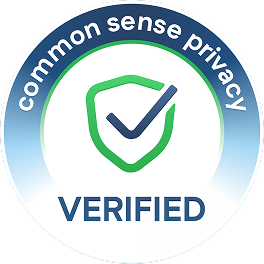Take a look inside 6 images
Socrative
Pros: Quizzes have useful features like adding links and explanations. Rooms enable unique classroom management options.
Cons: More serious in tone than some gamified competitors.
Bottom Line: This easy-to-use feedback and assessment tool might not dazzle students, but it can support responsive teaching.
Teachers using pen-and-paper assessments or simple quizzing tools such as Poll Everywhere or more gamified (and potentially distracting) tools like Kahoot! might want to take a look at Socrative. It's got more options for building meaningful learning than polling tools and focuses less on raucous gameplay and more on assessing student progress. Create a series of poll questions around a topic like internet safety to support a discussion about digital citizenship, or engage students in a Space Race to review last week's concepts and ease in to this week's lessons. The chance to provide instant feedback via explanations can be especially useful to cement learning. Ask thought-provoking questions and encourage "thinking time" to give students a break from the practice of having to be first or fast, perhaps even allowing for multiple correct answers to promote critical thinking through discussion. Or create a standards-aligned exit ticket for the last five minutes of class to check for understanding and inform instruction for the next activity.
Teachers should note that it's easy for students to select the wrong answer in their quest to answer quickly, because there's no "Are you sure?" prompt before they submit responses. Students can review the feedback from any assessment opportunity and apply that knowledge to future assessment situations with the tool or in the classroom, but teachers should consider asking several questions that address the same concepts in order to get a better idea of student mastery.
Socrative is an interactive web-based student-response system (also available through iOS, Android, and Chrome apps) that can help teachers spark conversation and learning through polls and quizzes. Students access questions via a code that places them in a teacher-created room. They then answer questions that register immediately on the teacher's computer. When everyone has responded, teachers can display the results using the "How did we do?" button. Teachers can create quizzes, quick questions, and exit slips that allow for multiple-choice, true/false, and short-answer questions. These quizzes can include images, links, and answer explanations. Teachers can also attach standards to questions. Quizzes get auto-scored, and short answers can be manually graded. In addition to those basic assessment strategies, students can team up to play Space Race, a collaborative activity that allows student teams to answer questions as quickly as they can; the teacher can access real-time results of this race as well as determine student teams. At the end, teachers can see quiz data and download it through an Excel sheet or email it for further planning.
Socrative is simple and flexible and, best of all, it works on almost any web- or app-enabled device. Properly implemented, this assessment tool allows teachers to create rich quiz-type content and engage all students through quick formative assessment questions or healthy team competitions. It's a great tool to assess learning in the moment or spark conversation, because there's so much flexibility in how teachers structure questions, answers, and explanations. Teachers can adjust settings so that students can see percentages on the screen instead of individual responses; students who are reluctant to raise their hand in class will appreciate the chance to respond digitally and anonymously.
Using Socrative as a starting place, teachers can foster effective communication skills by encouraging students to think critically and debate answers in a respectful and meaningful way. Also, the tool has the capability to align each question to a Common Core standard. You can measure student learning with printable reports, but to see long-term data of students over time, you'll need to put in the time to aggregate separate reports into one.
Socrative's Discover library could be a huge asset if it fills up with quality content. Currently, though, a lot of the quiz creation is on teachers, and it will be a bit more time-consuming to make quizzes great with the relevant links, answer explanations, and imagery. The big drawback to Socrative vs. other tools is that it's not flashy and won't get classrooms activated and fired up in the way some students might expect, given the ubiquity of gamified tools. That said, for teachers looking to keep the focus on assessment, Socrative could be a breath of fresh air.
















